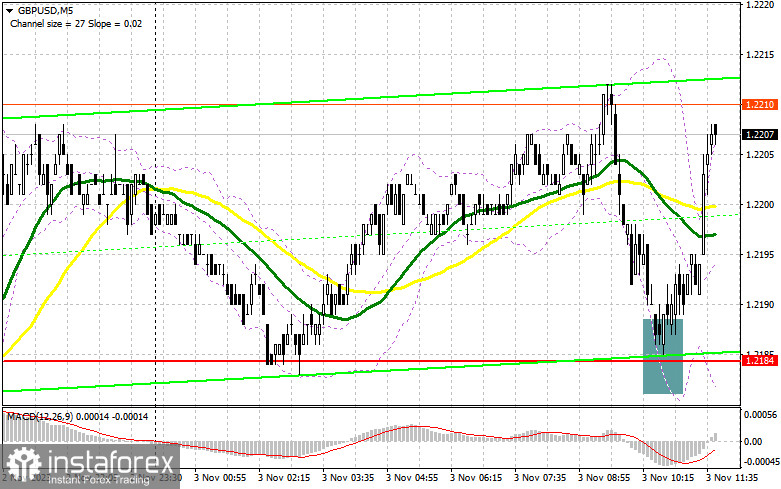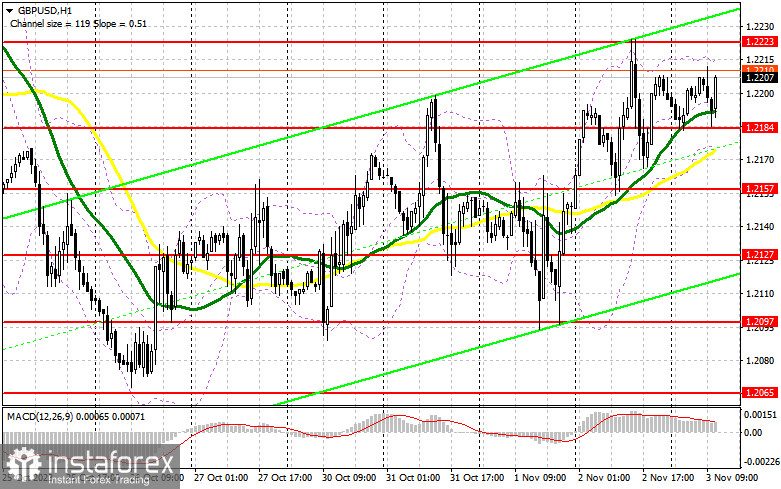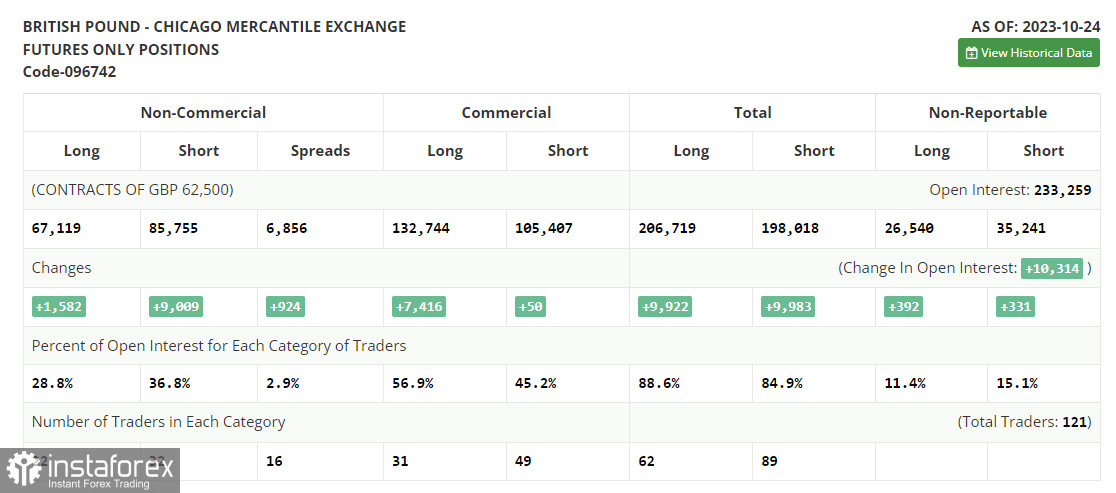In my morning review, I mentioned the level of 1.2184 as a possible entry point. Let's have a look at what happened on the 5-minute chart. A fall to this level and its false breakout generated a good entry point into long positions, sending the price up by more than 30 pips. For the second half of the day, the technical setup has been left the same.

For long position on GBP/USD:
The pound is likely to respond positively to any news of a sharp decrease in US job numbers following significant growth in September. This will serve as an additional indication that the Federal Reserve is likely to halt its interest rate hiking cycle in December this year. Conversely, if the data is as robust as it was earlier in the month, demand for the dollar will rebound, and the pound will lose its ground. If so, only increased bullish activity and false breakout around the 1.2184 level, where the moving averages favor buyers, will provide an entry point for long positions with the target at the resistance at 1.2223. The pair failed to reach this level in the first half of the day. A breakout and consolidation above this range would allow buyers to re-enter the market, signaling the opening of long positions and aiming for 1.2258. The ultimate target will be the 1.2285 area where I intend to lock in profits. In a scenario where the pair declines and there is no buying activity at 1.2184 in the latter half of the day, only a false breakout around the next support level of 1.2157 will signal the opening of long positions. I plan to purchase GBP/USD immediately on a rebound from 1.2127, aiming for a correction of 30-35 pips within the day.
For short positions on GBP/USD:
Sellers may completely lose control of the market if they miss the nearest resistance at 1.2223. A false breakout there, coupled with strong US data, would present an excellent opportunity for opening short positions at the end of the week, aiming for a downward move towards the 1.2184 support, which has already been tested in the first half of the day. A breach and an upward retest of this range will deal a significant blow to bullish positions, potentially leading to triggered stop-loss orders and opening the path to 1.2157. The subsequent target would be the 1.2127 area, where I would look to take profits. If GBP/USD rises and there is no activity at 1.2223 in the latter part of the day, which seems likely, demand for the pound will return, giving buyers a chance to build a further upward correction. In such a case, I would delay selling the pair until a false breakout occurs at 1.2258. If there is no downward movement there, I would sell GBP/USD immediately on a rebound from 1.2285, targeting an intraday correction of 30-35 pips.

COT report
The Commitments of Traders report for October 24 indicated a rise in both long and short positions, tilting favor towards sellers of the GBP/USD pair. UK economic data remains weak, evidenced by reduced activity in both the manufacturing and services sectors, which points to a slowdown in economic growth. At the upcoming meeting this week, the Federal Reserve is likely to leave its monetary policy unchanged, potentially supporting the pound. However, recent strong US data could lead to hints about a possible rate hike in December, thus strengthening the US dollar. Non-commercial long positions went up by 1,582 to 67,119 while non-commercial short positions jumped by 9,009 to 85,755, increasing the spread by 924 positions. The weekly closing price declined to 1.2165 from 1.2179.

Indicator signals:
Moving Averages
Trading around the 30- and 50-day moving averages indicates a range-bound market.
Please note that the time period and levels of the moving averages are analyzed only for the H1 chart, which differs from the general definition of the classic daily moving averages on the D1 chart.
Bollinger Bands
If the pair declines, the lower band of the indicator at 1.2120 will act as support.
Description of indicators:
• A moving average of a 50-day period determines the current trend by smoothing volatility and noise; marked in yellow on the chart;
• A moving average of a 30-day period determines the current trend by smoothing volatility and noise; marked in green on the chart;
• MACD Indicator (Moving Average Convergence/Divergence) Fast EMA with a 12-day period; Slow EMA with a 26-day period. SMA with a 9-day period;
• Bollinger Bands: 20-day period;
• Non-commercial traders are speculators such as individual traders, hedge funds, and large institutions who use the futures market for speculative purposes and meet certain requirements;
• Long non-commercial positions represent the total number of long positions opened by non-commercial traders;
• Short non-commercial positions represent the total number of short positions opened by non-commercial traders;
• The non-commercial net position is the difference between short and long positions of non-commercial traders.





















